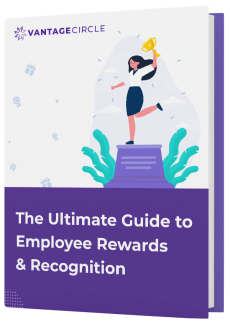Onboarding Vs Orientation: The Difference You Need to Know

When a new employee joins, properly welcoming them is very much crucial. It is an essential step because the environment is new to them. It becomes overwhelming for the new employees on their first day at work.
They might feel confused as they will have little idea of their new work environment. The new employees don't know where to start or who to approach. To avoid such a situation, an HR manager needs to make them feel comfortable in the workplace.
But how to implement such a process in an organization? This is where onboarding and orientation come into place. These two forms an integral part of the talent management process.
You might be thinking, aren't these the same? Well, almost nearly similar. In this article, we will discuss the difference briefly.
Recommended Resource: A Complete Guide On Talent Management.
What is Orientation?
Orientation is how recruits are introduced to their jobs, workplace, co-workers, and responsibilities. Effective employee orientation-
-
Answers any questions or concerns a new colleague may have
-
Makes them aware of company policies and expectations
-
Introduces them to their new positions and responsibilities
Learn More: Workplace Orientation: What Does it Mean and its Purpose
Main Objectives of Orientation:
An orientation program is a one-time event lasting up to a week. It focuses on what role a new employee will play in the company.
It is a conference-style event bringing together recruits and explaining to them the main objectives of the company. Information is being delivered through presentations and Q&A sessions.
Here are a few points that you need to accomplish during orientation:
-
Introduce the company's mission, values, and vision. The long-tenured employees can do it by giving presentations.
-
Completing mandatory employee paperwork after recruitment. Also collecting and answering any questions the new employees have.
-
Making new employees understand their job responsibilities and expectations.
-
Introduce the benefits that a new employee will get and how to use them. The HR representative can do this. And it also gives them a sense of job satisfaction.
-
Building strong relationships with colleagues and co-workers. This will help the recruits work more efficiently.
Advantages of Orientation:
-
Helping the new employees get acclimatized to their new workplace and giving them a physical tour. It helps them to have a basic idea of where the necessary tools are.
-
Introduction of company policies and procedures so that new employees follow the rules and maintain decorum within the organization.
-
Orientation helps an organization to figure out what does a new employee need. When an HR representative knows what problems a recruit faces, they can quickly work on them and solve them.
-
When you focus on helping new employees get settled in their new workplace, they feel more valued and trust the company culture.
What is Onboarding?
Onboarding is a thorough process where new employees are introduced to their respective departments. They learn their work by attending meetings and starter projects with co-workers.
Managers can schedule regular or offsite meetings to check up on their new employees. It enables you to ensure their comfortability within the organization regarding their work.
Learn More: Employee Onboarding- A Detailed Checklist
Main Objectives of Onboarding:
Onboarding is a continuous process with a series of events that can last up to 3 months or more. During the onboarding process, individuals get assigned to their respective departments.
One vital point to keep in mind is that orientation falls under onboarding.
Here are a few points that are accomplished during onboarding:
-
It helps the new employee settle in their new workplace.
-
Increase the productivity of an employee for better results.
-
The employees get more time to understand their work and their objectives.
-
It is mainly focused on a particular individual rather than all the recruits.
-
At the end of the onboarding process, recruits are ready to contribute to the company's cause.
Advantages of Onboarding:
-
Supporting new hires in their projects and letting them know about their career options is always a good idea. You can also show them how they can achieve it. It drives the engagement of the new employees.
-
It helps in employee retention. With good onboarding programs, miscommunications and misunderstandings tend to reduce. And it also helps them to acclimatize to their new environment quickly.
-
With an effective onboarding program, new employees understand their duties and roles at work. It gives them a clear picture of what they need to do. It eventually helps in boosting the company's bottom line.
-
Onboarding programs help to reduce the workplace stress of recruits. This is done by laying out daily tasks and providing them with tools to improve their skills. This way, things become more clear for them and helps them to achieve their respective targets.
What is the difference?
If we look at the definition and consider the major points, there is no significant difference between these.
Both are almost similar and very essential for a company when they recruit new employees.
Orientation falls under onboarding, and it is one of the stages it where new employees learn about the company and their job responsibilities.
Both of these have the same objective, but the only difference is their timing and the way it is implemented. Orientation is the process done immediately after an employee joins to make them aware of the company culture and the work they need to do. It can last up to a week or month.
Onboarding, on the other hand, is a thorough process lasting upto three months or a year.
Summing it Up:
From the points mentioned above, we can see that both onboarding and orientation complement each other and help a recruit settle in nicely. They both help the new employees to understand their work and the culture they will be working in.
You need orientation for the new employees to get familiar with the organization. And it would be best if you had onboarding to get the new employees invested in their day-to-day work schedule.
When used together, orientation and onboarding help establish more precise goals and role objectives, job satisfaction, and organizational commitment, which can help lower employee stress and turnover.
A well-organized orientation and onboarding process helps you to foster employee engagement so that you can take the best out of your new recruits.

Vantage Circle is a simple AI-powered Rewards & Recognition Platform for upgrading your employee experience and engagement for better productivity.





